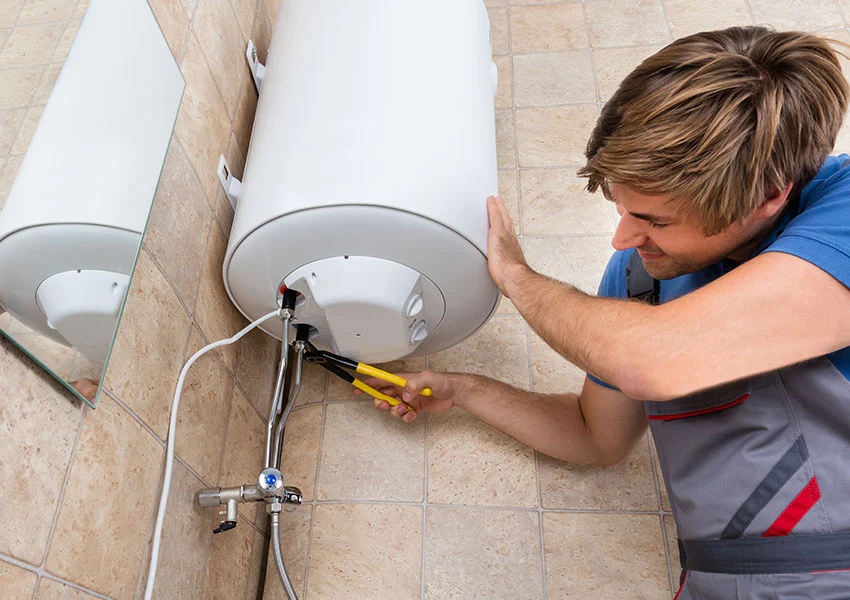Important Guidance on Maintaining Your Home's Hot Water SystemProfessional Advice for Maintaining Your Home's Hot Water System
Important Guidance on Maintaining Your Home's Hot Water SystemProfessional Advice for Maintaining Your Home's Hot Water System
Blog Article
On this page on the next paragraphs you will discover more helpful news in regards to How to Maintain a Hot Water Heater in a Few Simple Steps.

Warm water is crucial for everyday convenience, whether it's for a refreshing shower or cleaning dishes. To guarantee your warm water system runs efficiently and lasts longer, routine upkeep is essential. This post provides useful ideas and insights on how to maintain your home's hot water system to stay clear of disruptions and expensive fixings.
Introduction
Preserving your home's warm water system might seem complicated, however with a couple of easy steps, you can ensure it runs efficiently for years to find. This overview covers every little thing from understanding your hot water system to do it yourself upkeep tips and understanding when to call expert aid.
Value of Preserving Your Warm Water System
Normal maintenance not only prolongs the life expectancy of your warm water system yet also ensures it operates effectively. Ignoring upkeep can bring about decreased efficiency, higher energy expenses, and even early failing of the system.
Indicators Your Warm Water System Demands Upkeep
Knowing when your hot water system needs attention can avoid major problems. Watch out for indications such as inconsistent water temperature level, unusual noises from the heating unit, or rustic water.
Comprehending Your Hot Water System
Before diving into maintenance tasks, it's valuable to understand the fundamental parts of your warm water system. Commonly, this consists of the hot water heater itself, pipes, anode rods, and temperature controls.
Monthly Maintenance Tasks
Normal month-to-month checks can help catch minor issues before they escalate.
Purging the Hot Water Heater
Flushing your hot water heater removes sediment buildup, improving effectiveness and extending its life.
Monitoring and Changing Anode Rods
Anode poles stop deterioration inside the container. Evaluating and changing them when worn out is important.
Checking and Changing Temperature Level Settings
Changing the temperature settings guarantees ideal performance and security.
DIY Tips for Maintenance
You can do several maintenance tasks yourself to keep your hot water system in leading problem.
Looking for Leakages
Consistently evaluate pipelines and links for leaks, as these can lead to water damages and greater costs.
Checking Pressure Relief Valves
Examining the stress safety valve ensures it functions appropriately and protects against extreme pressure build-up.
Protecting Pipes
Insulating warm water pipes lowers warm loss and can save power.
When to Call an Expert
While DIY maintenance is valuable, some concerns need professional proficiency.
Facility Problems Needing Specialist Assistance
Examples consist of major leakages, electric issues, or if your water heater is regularly underperforming.
Regular Specialist Maintenance Conveniences
Specialist maintenance can include complete evaluations, tune-ups, and ensuring conformity with security standards.
Final thought
Regular upkeep of your home's warm water system is important for effectiveness, long life, and price savings. By following these pointers and recognizing when to look for specialist aid, you can ensure a reliable supply of hot water without unexpected interruptions.
How to Maintain an Instant Hot Water Heater
Before tinkering with your hot water heater, make sure that it’s not powered on. You also have to turn off the main circuit breaker and shut off the main gas line to prevent accidents. Also turn off the water valves connected to your unit to prevent water from flowing into and out of the appliance. 2. When you’re done, you have to detach the purge valves’ caps. These look like the letter “T” and are situated on either side of the water valves. Doing so will release any pressure that has accumulated inside the valves while at the same time avoid hot water from shooting out and burning your skin. 3. When the purge valves’ caps are removed, you have to connect your hosing lines to the valves. Your unit should have come with three hoses but if it didn’t, you can purchase these things from any hardware or home repair shops. You can also get them from retail stores that sell water heating systems. Read the user’s manual and follow it to complete this task properly. When the hosing lines are connected, open the purge port’s valves. 4. You should never use harsh chemical cleaners or solutions when cleaning your unit. Make use of white vinegar instead. It should be undiluted and you’ll probably use about 2 gallons. 5. Now flush your water heater. This task should probably take about 40 minutes. We can’t give you specific directions for this because the procedure is carried out depending on the type, model and brand of your heater. With that being said, refer to the user’s manual. 6. When you’re done draining the unit, you have to turn off the purge port valves again. Remove the hosing lines that you earlier installed on each of the water valves. Put the valve caps (purge port) back in their respective places and be very careful so as not to damage the rubber discs that are found inside these caps. 7. Now that everything’s back in place, check your user’s manual again to find out how to reactivate your water heating system. 8. Once it is working, turn one of your hot water faucets on just to let air pass through the heater’s water supply pipes. Leave the tap on until water flows smoothly out of it. https://www.orrplumbing.com/blog/2014/september/how-to-maintain-an-instant-hot-water-heater/

I'm just very excited about How to Maintain a Hot Water Heater in a Few Simple Steps and I really hope you enjoyed reading the entire blog posting. Sharing is good. Helping people is fun. Thanks a lot for your time. Revisit us soon.
Visit My Site Report this page